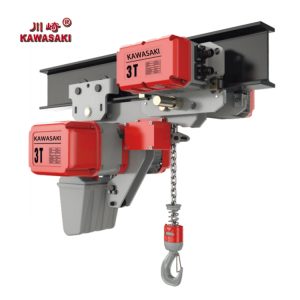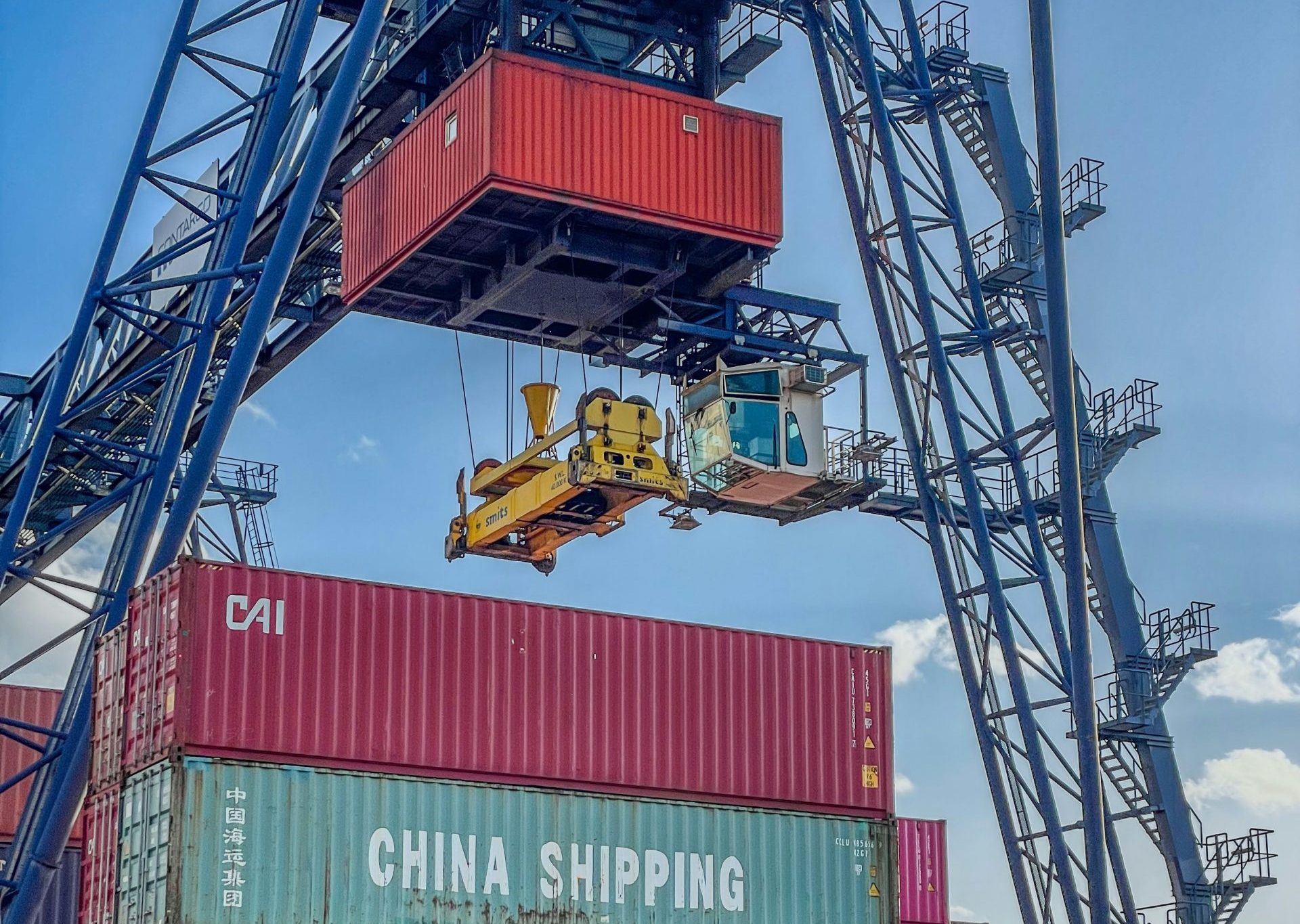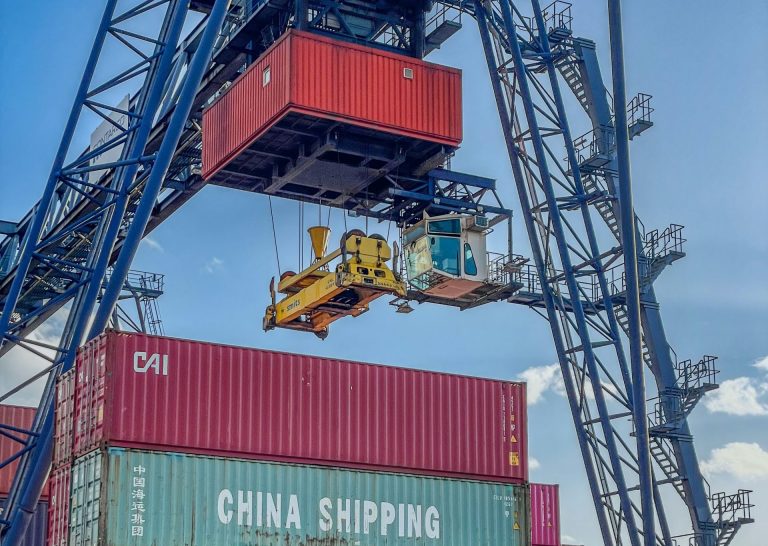Electric hoists are indispensable tools used for lifting and lowering heavy loads in various industrial settings. They enhance safety, efficiency, and productivity by minimizing the need for manual labor and reducing the risks of handling heavy materials. Among the most commonly used electric hoists are wire rope hoists and chain hoists. Although both serve the fundamental purpose of lifting, they differ significantly in terms of structure, performance characteristics, cost, and application scenariosUnderstanding these differences is crucial for selecting the right hoist for a specific task.
1. Basic Structure and Mechanism
Wire Rope Electric Hoists
Wire rope hoists use a wire rope—typically made of several strands of steel wire twisted together—to lift loads. The wire rope winds around a grooved drum, which is powered by an electric motor. A gearbox and braking system are also integrated to provide controlled lifting and lowering.
Chain Electric Hoists
Chain hoists use a load chain, usually made of high-tensile steel, which passes through a chain sprocket or load wheel. The electric motor drives the sprocket, lifting or lowering the chain and attached load. Like wire rope hoists, they include a gearbox and a brake system, although typically simpler in design.
2. Lifting Capacity
Wire Rope Hoists
- Higher lifting capacity—ranging from a few tons to several hundred tons.
- Can support continuous and heavy-duty operations.
- Preferred for industrial environments where high lifting strength is essential.
Chain Hoists
- Typically have a lower lifting capacity, up to 30 tons.
- Suited for light to medium-duty applications.
- Available in compact and portable versions for flexible use.
Conclusion: If your application requires lifting heavy loads over extended periods, a wire rope hoist is more suitable.
3. Lifting Height and Speed
Wire Rope Hoists
- Offer greater lifting heights—commonly up to 100 meters or more.
- Provide faster lifting speeds, making them ideal for time-sensitive operations.
- Some models allow variable speed control for precise load handling.
Chain Hoists
- Usually support lifting heights of up to 30 meters.
- Slower lifting speeds compared to wire rope hoists.
- Some newer models offer speed adjustments but not as precise or broad as wire rope systems.
Conclusion: Wire rope hoists are better suited for applications requiring significant lifting heights and speed.
4. Durability and Maintenance
Wire Rope Hoists
- The wire rope requires regular lubrication and inspection to prevent fraying, corrosion, and kinking.
- Drum and rope guide systems may need periodic maintenance.
- More components mean higher maintenance complexity.
Chain Hoists
- The chain is more durable and less prone to fraying or tangling.
- Lower maintenance needs compared to wire rope systems.
- Easier to visually inspect for wear and tear.
Conclusion: Chain hoists are more durable in dirty, harsh environments and easier to maintain.
5. Cost and Investment
Wire Rope Hoists
- Higher initial cost, especially for high-capacity or custom systems.
- Requires more complex installation and setup.
- Long-term operating costs may be higher due to maintenance and part replacements.
Chain Hoists
- Lower upfront cost.
- Simple installation, with many models being plug-and-play.
- Lower operating costs, particularly in non-continuous or lighter-duty usage.
Conclusion: For budget-conscious or occasional-use scenarios, chain hoists are more cost-effective.
6. Portability and Space Requirements
Wire Rope Hoists
- Larger and heavier due to the drum and gear system.
- Designed for fixed installations—such as cranes or overhead beams.
- Not suitable for mobile or temporary workstations.
Chain Hoists
- Compact and portable, especially for lighter models.
- Ideal for mobile lifting operations or small workshops.
- Can be easily relocated or installed with minimal effort.
Conclusion: Chain hoists are ideal for tight spaces and portable applications.
7. Noise and Operation Smoothness
Wire Rope Hoists
- Quieter operation due to drum mechanism and smoother lifting motion.
- Excellent for precision tasks, such as in automotive or aerospace assembly lines.
Chain Hoists
- Tend to be noisier, especially during chain movement through the sprocket.
- Lifting motion may be slightly jerkier, though newer models are smoother.
Conclusion: For noise-sensitive environments or high-precision work, wire rope hoists have an edge.
8. Safety Features
Both wire rope and chain electric hoists come equipped with essential safety features such as:
- Emergency stop mechanisms
- Overload protection
- Upper/lower limit switches
- Brake systems
However, due to their complexity, wire rope hoists often integrate more advanced safety technologies, like programmable controls, load sensors, and synchronized dual-lifting systems.
Conclusion: Wire rope hoists may offer more advanced and customizable safety features for high-risk operations.
9. Typical Application Scenarios
Wire Rope Electric Hoists – Common Applications
- Heavy Industry
- Steel plants, shipyards, and large manufacturing plants.
- Lifting of bulky machinery and materials.
- Construction Sites
- Hoisting concrete blocks, steel beams, or structural components.
- Long vertical lifts.
- Cranes and Gantry Systems
- Integration with overhead cranes or gantry cranes for large-scale movement.
- Mining and Energy
- Handling heavy drilling equipment or turbine parts.
- Automotive and Aerospace Assembly
- For large components requiring precision and synchronized lifting.
Chain Electric Hoists – Common Applications
- Workshops and Warehouses
- Lifting engines, pallets, or small equipment.
- Manual or electric chain hoists used in vehicle repair.
- Event Rigging and Entertainment
- Hanging lighting or stage setups.
- Portability and compactness are key.
- Maintenance and Repair Work
- Quick setup for lifting parts or tools.
- Ideal for on-the-go tasks.
- Light Manufacturing
- Moving small components in assembly lines.
- Ergonomic and cost-effective lifting solutions.
- Agricultural and Rural Applications
- Lifting hay bales, equipment, or feed bags.
10. Summary Comparison Table
| Feature | Wire Rope Hoists | Chain Hoists |
|---|---|---|
| Lifting Capacity | High (up to hundreds of tons) | Low to medium (up to 30 tons) |
| Lifting Height | Up to 100+ meters | Up to 30 meters |
| Speed | Fast and adjustable | Slower, basic control |
| Durability | Sensitive to environment | High in harsh environments |
| Maintenance | Higher and complex | Lower and simple |
| Cost | High initial and operating cost | Lower cost |
| Portability | Stationary | Highly portable |
| Precision/Noise | Smooth and quiet | Noisier, less smooth |
| Applications | Heavy-duty industry | Light/medium-duty and mobile use |
11. Final Thoughts: Choosing the Right Hoist
Selecting between a wire rope electric hoist and a chain electric hoist depends on various factors:
- Load Requirements: Heavier and continuous lifting? Go with wire rope. Occasional and lighter loads? Chain hoist fits the bill.
- Work Environment: Dirty, rugged environments favor the simplicity and durability of chain hoists.
- Budget Constraints: Chain hoists are more economical upfront and over time.
- Precision Needs: Wire rope hoists offer better load positioning and smoother movement.
- Space and Mobility: Limited space or need for portability? Chain hoists win here.
Ultimately, there is no one-size-fits-all solution. Each type of hoist has its advantages and best-use scenarios. Proper assessment of your operational needs, environment, and budget will help you make the most effective and efficient choice.


